Buying a Diamond With Fluorescence: Good Idea or Bad Idea?
Diamond owners who have long loved and valued the exquisiteness of their gemstone know very well that aside from the 4Cs of color, clarity, cut, and carat, there is one more thing that they need to be aware of – fluorescence.
Although technically not a characteristic of diamonds that is used for grading a diamond's color, fluorescence can also affect the value of a diamond, in the same way that the 4Cs do.

Good Fluorescence and Bad Fluorescence
Fluorescence is an attribute only of some diamonds, not all diamonds have it. It has to do with the behavior of the diamond when placed under certain kinds of light, namely fluorescent light (example: household lighting tubes), incandescent light (example: household lighting bulbs), ultraviolet or “black light,” and natural light or direct sunlight.
The source of light under which a diamond is viewed can improve or degrade the appearance of the diamond. If any given lighting condition has the effect of making the diamond appear clouded, oily, or hazy, then the fluorescence of the diamond is not good for the stone. This cloudy appearance, however, is very rare, affecting less than 1% of all diamonds with fluorescence. Typically diamonds that do have fluorescence just have a slight blueish hue under UV light.
If the fluorescent radiance of the diamond is bluish, and the color grade of the diamond is in the G to J (nearly colorless) and K to M (faint yellow) range according to the grading standards of GIA, then the effect of fluorescence will be to turn the diamond somewhat whiter and brighter because the K-M grade range for color is that of a diamond with faint yellow tones. Yellow is the complementary color to blue, hence, the whitening effect happens. The same thing applies to the nearly colorless range of G to J color graded diamonds. This is why fluorescence can sometimes be a good thing for diamonds that have a slight amount of yellowish color.
Sounding the Alarm
The GIA has grade levels for fluorescence, which are: Very Strong, Strong, Medium, Faint, None. Ordinarily, jewelry shops will not hesitate to address questions you may have about a diamond you may be interested in purchasing as far as color, clarity, cut, and carat are concerned.
However, not all jewelry shops are willing to answer questions about fluorescence. This is because their personnel themselves may not be fully convinced that fluorescence can also be a good thing.
There are those who only see fluorescence from a negative perspective. As such, they are of the opinion that admitting to the fluorescence of a diamond will have a similarly negative impact on its price. For these people, admitting to fluorescence is practically the same as sounding the alarm about a perceivable defect in the diamond.
Bottom Line
As a final analysis, there are two major ways of looking at diamond fluorescence, and both have to do with the color of the fluorescence. Keep this in mind; it could be useful when you are already at the jewelry store and deciding on whether or not to buy a diamond that has attracted you:
- Blue or bluish fluorescence can enhance the whiteness and brightness of a diamond with slight yellowish tones.
- Yellow fluorescence do not enhance whiteness and brightness of a diamond; on the contrary, a yellow or yellowish fluorescence can decrease the value of the diamond because it has the effect of making the diamond less “pure looking.
